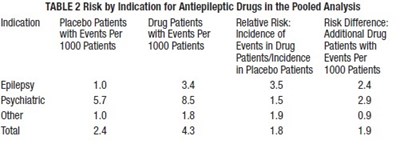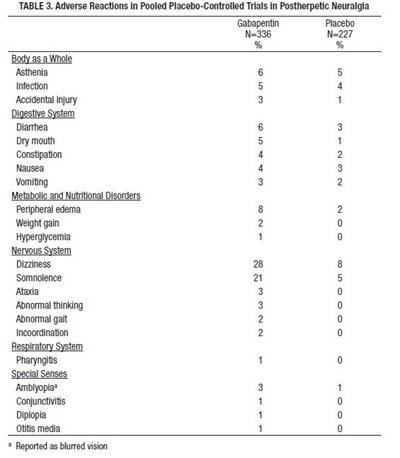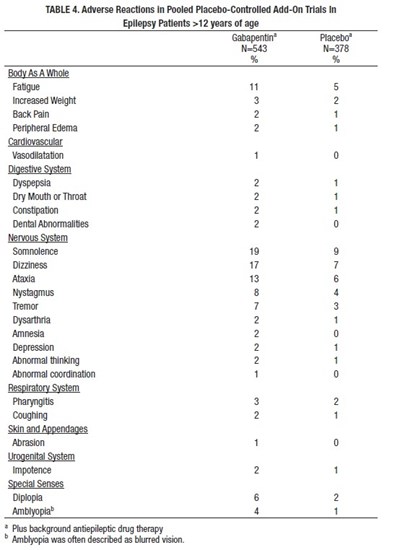Product Images Gabapentin
View Photos of Packaging, Labels & Appearance
- PDP - 68071 1212 06 I30
- image - d3fd11fe 4d3f 4002 8f9e 42cc12b4252d 01
- image - d3fd11fe 4d3f 4002 8f9e 42cc12b4252d 02
- image - d3fd11fe 4d3f 4002 8f9e 42cc12b4252d 03
- image - d3fd11fe 4d3f 4002 8f9e 42cc12b4252d 04
- image - d3fd11fe 4d3f 4002 8f9e 42cc12b4252d 05
- image - d3fd11fe 4d3f 4002 8f9e 42cc12b4252d 06
- image - d3fd11fe 4d3f 4002 8f9e 42cc12b4252d 07
- image - d3fd11fe 4d3f 4002 8f9e 42cc12b4252d 08
- image - d3fd11fe 4d3f 4002 8f9e 42cc12b4252d 09
- image - d3fd11fe 4d3f 4002 8f9e 42cc12b4252d 10
- image - d3fd11fe 4d3f 4002 8f9e 42cc12b4252d 11
- image - d3fd11fe 4d3f 4002 8f9e 42cc12b4252d 12
Product Label Images
The following 13 images provide visual information about the product associated with Gabapentin NDC 68071-1212 by Nucare Pharmaceuticals, Inc., such as packaging, labeling, and the appearance of the drug itself. This resource could be helpful for medical professionals, pharmacists, and patients seeking to verify medication information and ensure they have the correct product.
PDP - 68071 1212 06 I30

This is a medication label for Gabapentin 300mg capsules, with different lot numbers and expiration dates. The capsules are oval, yellow and opaque, each containing 300mg of Gabapentin. The label indicates that the medication is prescription-only, and there is a warning to keep it out of reach of children. The label also provides the National Drug Code and the product number, as well as storage instructions.*
image - d3fd11fe 4d3f 4002 8f9e 42cc12b4252d 01

This is a dosage table for Gabapentin based on renal function. The table shows the dose range and regimen for different levels of creatinine clearance. The dosage varies from 100mg to 30000mg daily, depending on the patient's renal function. Patients on hemodialysis also have a supplemental post-hemodialysis dose. Dosage instructions are given using abbreviations such as TID, BID, and QD. For patients with a creatinine clearance of less than 15 ml/min, the daily dose should be reduced in proportion to creatinine clearance.*
image - d3fd11fe 4d3f 4002 8f9e 42cc12b4252d 03

This appears to be a table that indicates the risk of antiepileptic drugs by indication. The indications are listed as epilepsy, psychiatric, and other, along with a total. The table is divided into two columns, one for placebo patients and another for drug patients. The number of patients with events per 1000 patients is listed in each column. Another column indicates the relative risk of drug patients compared to placebo patients. Finally, a risk difference column lists the additional drug patients with events per 1000 patients.*
image - d3fd11fe 4d3f 4002 8f9e 42cc12b4252d 04

This is a table of adverse reactions in pooled placebo-controlled trials in postherpetic neuralgia. It shows the percentage of people who experienced adverse reactions in the gabapentin and placebo groups. Adverse reactions included asthenia, infection, accidental injury, diarrhea, dry mouth, constipation, nausea, vomiting, weight gain, hyperglycemia, dizziness, somnolence, ataxia, abnormal thinking, abnormal gait, incoordination, pharyngitis, blurred vision, amblyopia, conjunctivitis, diplopia, and otitis media.*
image - d3fd11fe 4d3f 4002 8f9e 42cc12b4252d 05

The text provides a table showing adverse reactions in epilepsy patients above 12 years of age who took gabapentin and placebo as add-on therapy. The adverse reactions are categorized and indicated as a percentage of patients who experienced them. The reactions range from body-related (such as fatigue and increased weight), cardiovascular-related, digestive system-related, nervous system-related (such as somnolence and dizziness), respiratory system-related, urogenital system-related (such as impotence), and special senses (such as diplopia). The term "Amblyopia" was described as blurred vision.*
image - d3fd11fe 4d3f 4002 8f9e 42cc12b4252d 06

This is a table displaying adverse reactions in a placebo-controlled add-on trial for pediatric epilepsy patients aged 3 to 12 years. The table compares the results of patients taking Gabapentin® versus those taking a Placebo. Adverse reactions include Body As AWnoke, Vial Infection, Fever, Increased Weight, Fatigue, Nausea and/or Vomiting, Somnolence, Hostility, Emotional Lability, Dizziness, Hyperkinesia, Bronchitis, and Respiratory Infection. The table notes that all patients were also on background antiepileptic drug therapy.*
image - d3fd11fe 4d3f 4002 8f9e 42cc12b4252d 08

This text provides a table showing the duration, dosages, and number of patients for two controlled PHN (post-herpetic neuralgia) studies that evaluated the efficacy of gabapentin. The target dose of gabapentin varied between 1800-3600 mg/day (given in 3 divided doses) in the two studies, with the duration of the studies being 7-8 weeks. The total number of patients receiving gabapentin was 223, with 11 patients receiving a placebo, making up a total of 227 patients.*
image - d3fd11fe 4d3f 4002 8f9e 42cc12b4252d 11

The text describes a figure presenting the proportion of patients who responded to treatment in controlled studies of postherpetic neuralgia (PHN). The figure shows that in study 1, 34% of patients were responders, while in study 2 the proportion of responders was not available. There is also a statistical significance noted (p<0.001). Additionally, the figures include dosages of drugs GEP 3600, GBP 1800, and GBP 2400, but their relevance is unclear without further context.*
* The product label images have been analyzed using a combination of traditional computing and machine learning techniques. It should be noted that the descriptions provided may not be entirely accurate as they are experimental in nature. Use the information in this page at your own discretion and risk.




